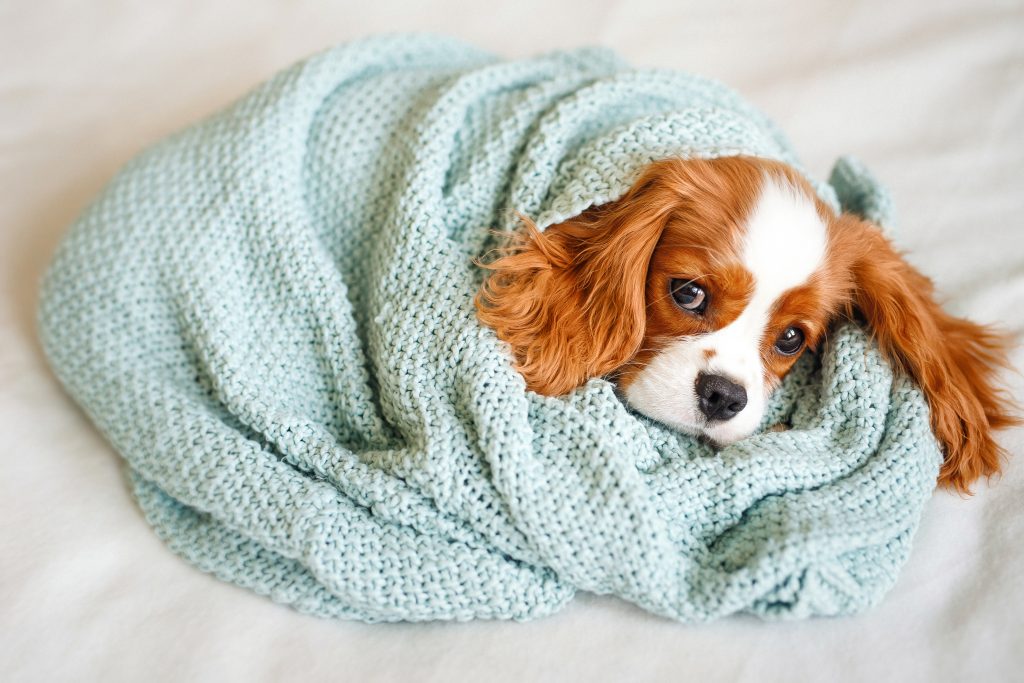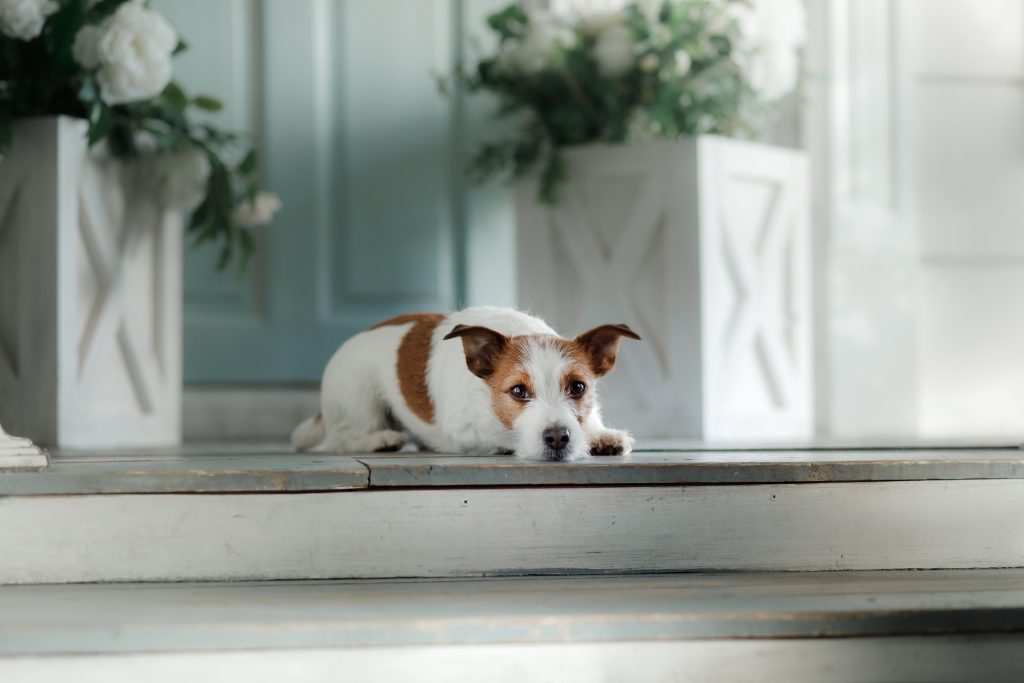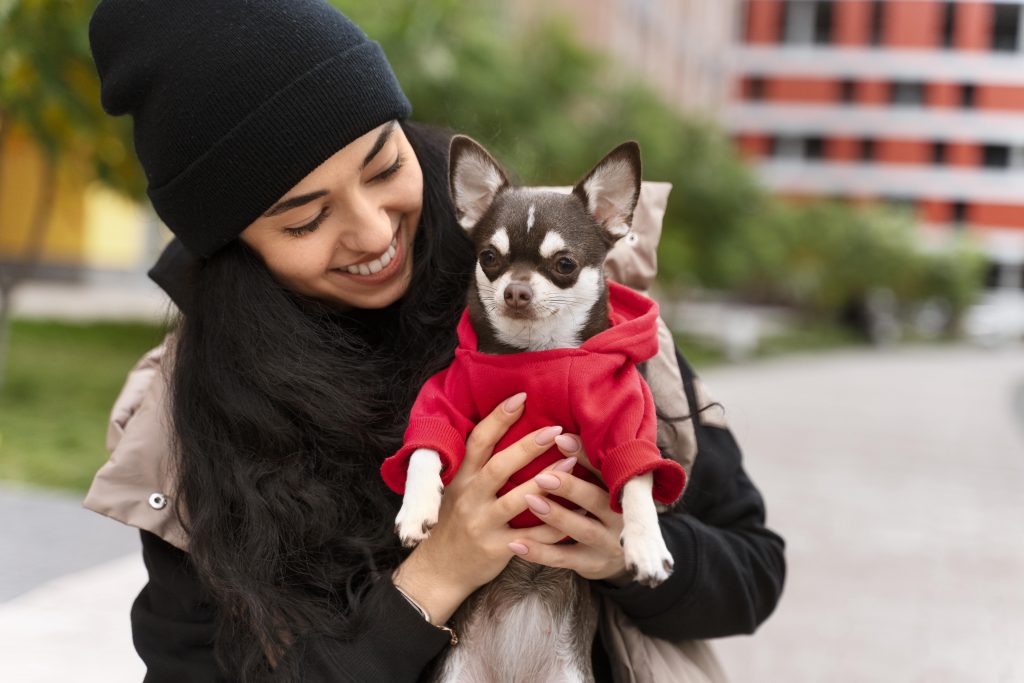Get prepared for the cold winter weather as we dig into the facts on dogs coping in the cold and answer the question – how cold is too cold for your dog?
As winter makes itself comfortable and we settle into the cooler weather (cue the frosty mornings and chilly evenings spent cuddled up in front of series with our furry besties on our laps – living the dream).In any case, there are of course times when our precious pooches spend time outside and so we are left to ask: How cold is too cold for our dogs?

How cold is too cold for your dog?
Well, the answer depends on your dog, plus a number of other factors. Keep in mind that the same way that humans are all unique, so are our dogs.
Generally speaking, your dog is likely to feel uncomfortable when the temperature is colder than 4°C. When the temperature reaches this point, it’s a good idea not to let your dog stay outside for long periods of time.
Smaller dogs with shorter coats are more likely to feel the cold compared to larger breeds with thicker coats. The same goes for senior dogs who are more likely to suffer the consequences of cold weather compared to their younger counterparts.
But keep in mind that even a thick coat can only protect your dog so much – your dog’s ears, nose, paws and tail are still exposed.
When to bring your dog inside
Although dogs have fur, this is not enough to keep them warm in severely cold weather. Puppies and older dogs should not be allowed to sleep outside as they cannot tolerate low temperatures. When you feel the temperature dropping, it’s advised that you bring your dog inside, regardless of their age, size or breed. If it’s too cold for you, it’s likely to be too cold for your dog.

But I thought dogs were made to be outside?
Although our domesticated dogs are descendants of wolves who have no issues living and thriving in freezing cold weather and snow, our domesticated pups are somewhat different. Over the years, humans created breeds using a technique known as selective breeding.
Some dogs like Huskies or Malamutes were bred to thrive in the cold and to be excellent at pulling sledges through the snow. Other breeds thrive in hotter climates. These include Great Danes and even Chihuahuas. These breeds are not built for colder climates.
How to know when your dog is cold
There are some behavioural signs your dog might exhibit, these include:
- Whining
- Barking
- Dropped ears
- Freezing
- Paw raised
- Shivering
- Anxiousness
- Slowing down
- Searching for a warmer place to escape from the cold
Factors to keep in mind regarding how your dog responds to the cold
1. Type of coat
Dogs who have thick, double-layered coats (i.e. Siberian Huskies) are used to cold Northern climates and tend to thrive in colder weather. On the other hand, dogs who have thin coats such as Greyhounds, suffer in cold weather.
2. The colour of the coat
Who knew that the colour of your dog’s coat affected his ability to handle the cold? But it’s true! On a clear and sunny day, dogs with dark coloured coats absorb more heat from the sun, which keeps them warmer.
3. The size of your dog
The smaller your dog, the more they feel the cold. Smaller dogs lose heat faster than larger dogs.
4. The weight of your dog
Less body fat means less insulation. Meaning that the smaller and skinnier your dog, the more they feel the cold.
5. The health and age of your dog
Puppies, senior dogs and sick dogs are not as efficient at regulating their body temperatures and require protection from the cold.

3 tips for keeping your dog warm
1. Create a warm and cosy space for your dog to sleep in
Your dog’s bed should contain a thick blanket and cushioning to comfort. If your dog sleeps in a particularly cold or draughty part of your house, then you might want to consider getting a self-warming pet mat – this will retain your dog’s body heat. You can also use a microwavable heating pad for extra warmth.
If you’re insured with Oneplan Pet Insurance, you can spoil your precious fur baby with a comfy and cosy bed to keep them warm in winter at up to 25% discount! You can learn more about the cool benefits of being a Oneplan Pet Parent here.
2. Get a dog jacket or jersey
Breeds with shorter coats often benefit from a cosy winter jacket or jersey. Ensure that any dog clothing is properly fitted and is not too tight or a choking hazard. Check out some of these boujee and cosy winter jerseys.
3. Create a warm shelter outside
If you leave your dog outside during the day or for certain parts of the day, then you need to ensure she has a safe, warm and dry spot to relax in when she is not playing around in your garden. Your dog’s shelter should be waterproof and ideally 10cm off the ground.
We hope these tips will help you to ensure that your fur baby stays warm and cosy this winter. And don’t forget – if you’re cold, your pooch is probably cold too!
Read this next: How to Make Dog Booties Out of Socks



